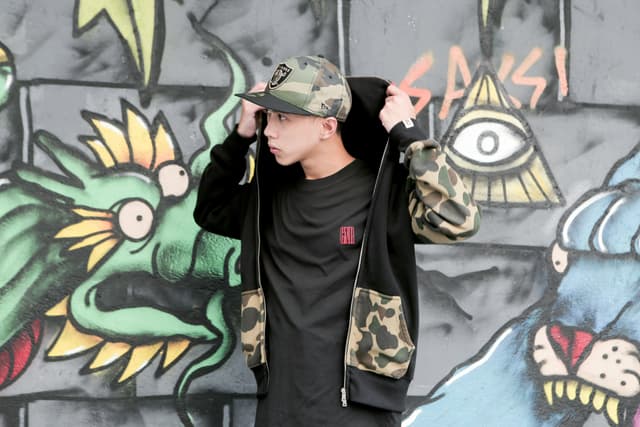Fashion and music have long been intertwined, with each influencing the other in powerful ways. From the flamboyant styles of rock stars in the '60s to the streetwear culture fueled by hip-hop in the '80s and '90s, music has been a driving force in shaping fashion trends and vice versa. But what is it about music that makes it so influential in the world of fashion? In this article, we explore the relationship between music and fashion, examining how the sound of an era often sets the tone for its style, and how musicians have become the ultimate fashion icons.
1. The Symbiotic Relationship Between Music and Fashion
At its core, the connection between music and fashion is a reflection of culture. Music is a powerful tool for self-expression, and so is fashion. The way people dress often mirrors the music they listen to, and the music they listen to often inspires the way they dress. This two-way relationship has created some of the most iconic moments in fashion history, where an artist’s personal style has influenced millions and music genres have set the visual tone for entire generations.
When music genres evolve, they often bring new aesthetics with them. For example, the vibrant colors, bold patterns, and extravagant styles of the '70s were a direct reflection of the disco music that dominated the era. Similarly, the raw, rebellious spirit of punk rock was captured in the leather jackets, torn jeans, and studs that became synonymous with the movement.
Fashion designers have often looked to music for inspiration. Many of the world’s most renowned fashion houses have collaborated with musicians or drawn on musical influences to create collections that speak to the cultural moment. From the punk influence on Vivienne Westwood’s designs to the hip-hop aesthetics seen in Virgil Abloh’s collections at Louis Vuitton, music has served as a wellspring of creativity for fashion.
2. The 1960s and 1970s: The Birth of Counterculture Fashion
The 1960s and 1970s marked a pivotal time in both music and fashion history. The counterculture movement, driven by political and social change, led to an explosion of new music genres and styles. Music became a vehicle for protesting societal norms, and fashion became a way for young people to express their newfound independence.
The rise of rock 'n' roll in the '60s had a profound impact on fashion. Artists like The Beatles, Jimi Hendrix, and Janis Joplin introduced a new, more casual approach to clothing, blending elements of traditional British tailoring with bohemian, free-spirited style. This was a stark contrast to the formal, rigid attire of previous decades.
By the 1970s, disco music had taken over, and fashion followed suit. The bright colors, metallic fabrics, and high-energy clothing of the disco era reflected the exuberant, hedonistic spirit of the music. David Bowie’s glam rock aesthetic also made a huge impact, with androgynous outfits, glitter, and bold, theatrical looks influencing not only music fans but also fashion designers and artists.
3. The 1980s and 1990s: Hip-Hop and the Rise of Streetwear
The '80s and '90s saw the birth of hip-hop, and with it, the emergence of a new form of fashion: streetwear. Hip-hop culture, which emerged from the Bronx, was a cultural force that combined music, dance, art, and fashion. The genre’s rise to prominence had a major influence on global fashion trends.
Hip-hop artists like Run DMC, LL Cool J, and Public Enemy embraced oversized clothing, athletic wear, and sneakers—styles that were practical, comfortable, and reflective of their working-class roots. The relationship between hip-hop and fashion deepened in the '90s, when streetwear brands like Supreme, FUBU, and Wu-Wear began to emerge, creating a market for hip-hop-inspired fashion that would dominate the next few decades.
Sneakers, in particular, became an essential part of hip-hop culture and streetwear. Artists like Kanye West and Jay-Z made sneaker culture a billion-dollar industry, collaborating with brands like Nike and Adidas to create limited-edition, high-demand releases that became cultural phenomena. Today, sneakers are a central part of street style, with collectors willing to spend large sums for rare or iconic pairs.
4. The 2000s: Pop Stars and High Fashion Fusion
As the new millennium arrived, the line between music and fashion became increasingly blurred. Pop stars like Beyoncé, Britney Spears, and Justin Timberlake became global style icons, and their influence on fashion reached new heights. Music videos and red carpet appearances became key platforms for showcasing new trends, and fans began to emulate their favorite artists’ styles.
In the early 2000s, fashion houses began to collaborate more closely with pop stars, blurring the lines between high fashion and popular culture. Tommy Hilfiger collaborated with hip-hop artists, while Gucci partnered with Beyoncé for a campaign that highlighted the fusion of pop music and high fashion. This era marked the rise of the “celebrity-endorsed” fashion trend, where musicians and other celebrities became the faces of luxury fashion brands.
During this time, music festivals like Coachella became major fashion events, with festival-goers often wearing bohemian-inspired outfits that reflected the indie and pop music that dominated the scene. The concept of “festival fashion” became its own category, and designers began to create collections specifically designed for the music festival crowd.
5. The Role of Social Media: Music Meets Fashion in the Digital Age
The advent of social media has had a profound impact on the relationship between music and fashion. Platforms like Instagram, TikTok, and YouTube have allowed musicians and fans alike to share their fashion choices with a global audience. Celebrities and influencers often use these platforms to showcase their personal style, promoting fashion trends while also setting new ones.
Social media has also allowed niche music subcultures to flourish. Artists in genres like K-pop, electronic dance music (EDM), and indie rock use their platforms to share their unique styles, which are often closely tied to the music they create. The virality of music videos and photos has made it easier than ever for new trends to emerge, and for music fans to connect with one another through their shared style.
In addition, streaming platforms like Spotify and Apple Music have transformed how music is consumed, making it easier for fashion-forward fans to discover new artists and their distinctive styles. Music and fashion are no longer confined to physical locations or events; they have become intertwined in the digital space, accessible to anyone, anywhere.
6. Fashion as a Medium of Self-Expression: The Legacy of Music on Style
Today, fashion continues to be a tool for self-expression, and music remains one of the most influential forces in shaping the way people dress. Whether it’s through the punk-inspired looks of modern rock bands, the minimalist styles of electronic artists, or the extravagant outfits of pop stars, music provides a framework for people to express their identities and connect with like-minded individuals.
Music and fashion will undoubtedly continue to evolve together, with each new generation of artists bringing fresh perspectives and new influences. As we move forward, the relationship between music and fashion will remain a powerful, symbiotic force, constantly reshaping how we express ourselves through what we wear.
Loading...



